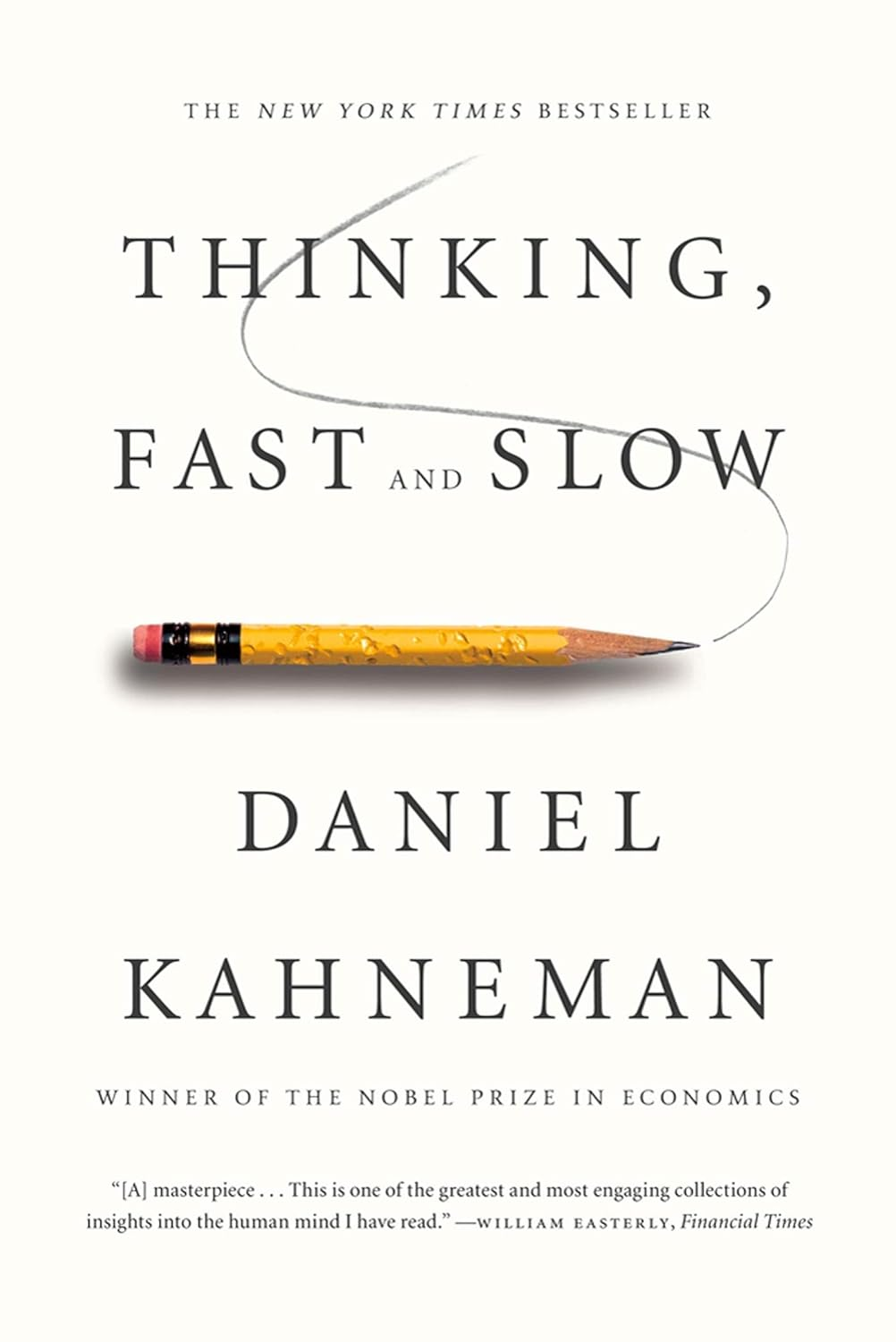Thinking, Fast and Slow
-- This summary is a personal interpretation for educational purposes. All rights belong to Daniel Kahneman and his publishers.--
The purpose of this publication is:
- To promote financial literacy in an altruistic way
- To reach the population with fewer resources
- To encourage the purchase of the original book. Amazon - Thinking, fast and slow
- This is a content generated by the most common AIs, from the content they have in their databases. Such content can be accessed by any user, I have only compiled and exposed such information here. It is NOT my own material -
- The division and structure may not coincide with the original, and may have been adapted for its comprehension and dynamism. -
📘 Introduction
🧠 A fascinating exploration of how we think… and why we often get it wrong
In Thinking, Fast and Slow, Daniel Kahneman — Nobel Prize winner in Economics and one of the most influential psychologists of the 20th century — takes us on a journey into the depths of the human mind. This book is not merely a work of psychology, but a detailed map of the two modes of thinking that govern our everyday decisions: one intuitive, fast, emotional; and the other deliberate, slow, rational.
Kahneman doesn't write for specialists. His style is accessible yet profound, filled with real-life examples, fascinating experiments, and sharp observations about human nature. From financial judgments to partner choices, from gambling to medical diagnoses, Thinking, Fast and Slow reveals that what we believe to be logical decisions... are often mental shortcuts riddled with bias.
📉 "Human thinking is far from a logical machine: it is more a battleground between swift intuitions and strenuous reasoning."
This book doesn’t just educate — it transforms the way we understand our minds, and therefore, the world we build through them.
📖 1 — “Two Systems”
🧠 The brain as a two-speed machine
Kahneman introduces the cornerstone of the book: the existence of two thinking systems.
-
System 1: fast, automatic, intuitive. It responds effortlessly when we recognize an angry face or solve “2+2”.
-
System 2: slow, analytical, logical. It kicks in when we solve “17 × 24” or try to grasp subtle irony.
🚦 The big problem: System 1 is often in control, even in situations where System 2 should take over. This leads to systematic errors.
📷 Kahneman uses optical illusions to show how, even knowing we’re being fooled, we still perceive incorrectly. The same applies to judgments: we know biases exist, yet we keep falling for them.
🗝️ Key takeaways from the chapter:
-
We think faster than we reason.
-
System 2 is lazy: it only activates when absolutely necessary.
-
Many everyday decisions are made without thinking… literally.
🗣️ Highlight quote:
"Thinking is hard, that’s why most people judge."
📖 2 — “Mental Shortcuts and Predictable Errors”
🎲 The logic of intuition… and its traps
This chapter dives into “heuristics”: mental shortcuts we use to judge the world quickly. They’re helpful, but also risky.
🔍 Kahneman and Tversky (his collaborator) identified several:
-
Availability heuristic: we judge the frequency of an event based on how easily it comes to mind (e.g., we think shark attacks are more common than coconut falls because the former are in the news).
-
Representativeness heuristic: we assume something belongs to a category if it resembles our prototype, even if the statistics say otherwise (e.g., assuming a librarian can’t be extroverted).
📉 The issue isn’t a lack of information, but overconfidence in quick perceptions.
📊 Kahneman explains how even financial and medical experts can be as wrong as a novice flipping a coin when they rely solely on intuition.
🧠 Our brains aren’t wired for statistical thinking. We prefer compelling stories over complex data.
🗝️ Key takeaways from the chapter:
-
Heuristics simplify the world… but steer us away from the truth.
-
Often, what seems logical actually isn’t.
-
Intuition can be useful, but it’s not infallible.
🗣️ Highlight quote:
"We are prone to trust compelling stories more than uncomfortable data."

